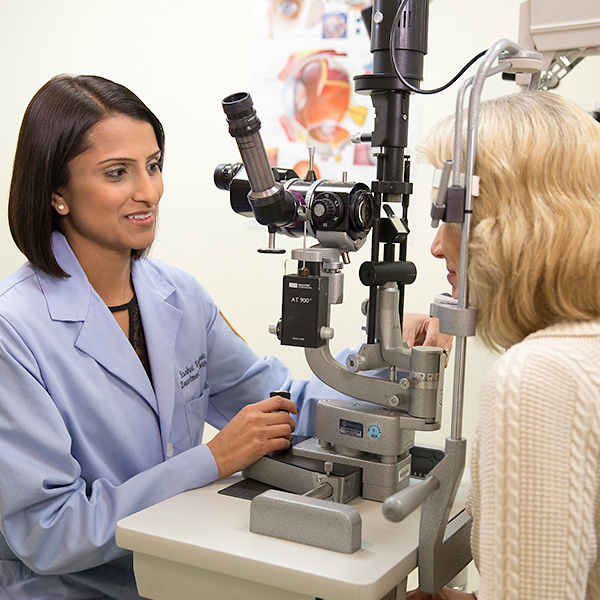Retinal Tear
Overview and Facts about Retinal Tear
The retina is a thin layer of nerve tissue that lines the inside of the back of the eye. Its role is to help the eye communicate with the brain, which occurs when light-sensitive photoreceptors known as rods and cones, convert light into electrical impulses that are carried to the brain through the optic nerve. The brain then translates these electrical signals into images.
A retinal tear occurs when the vitreous–which is gel-like material that fills the inner eye and is attached to the retina–forcibly pulls away from the retina, causing a tear in one or more places.
Signs and Symptoms of Retinal Tear
The telltale symptoms of a retinal tear include:
- The sudden onset or worsening of “floaters," which are small black specks, lines or cobweb-like threads “floating” in your field of vision. Floaters are caused when the microscopic fibers inside the vitreous begin to form clumps, which cast shadows on the retina.
- Flashes of light (photopsia). As the vitreous pulls on the retina, you may experience flashes that resemble lightning strikes. These flashes can appear on and off for weeks or even months.
When the tear is associated with a vitreous hemorrhage (bleeding into the vitreous) or a detached retina (vitreous cavity fluid passing through the tear into the space behind the retina) Symptoms may include:
- Blurred vision
- Reduced peripheral vision
- A curtain-like shadow in your vision
Not all retinal tears, however, lead to symptoms.
Causes and Risk Factors of Retinal Tear
At birth, the vitreous is securely attached to the retina. As we age, the vitreous gradually thins and shrinks, resulting in its separation from the retina.
Known as posterior vitreous detachment, this condition usually does not cause any problems. In some instances, however, the vitreous pulls away hard enough to cause a tear. Or, if eye trauma occurs, there may also be a tear.
Risk factors for retinal tears include:
- Being an older adult
- Being nearsighted (myopia)
- Having associated lattice degeneration, which involves the blood vessels appearing in a crisscrossing or lattice pattern due to abnormally thin retinal tissue
- Experiencing eye trauma
- Having a family history of retinal tears or problems
- Having had prior eye surgery (such as cataract surgery)
Tests and Diagnosis of Retinal Tear
Anyone experiencing symptoms of a retinal tear should see an eye care specialist as soon as possible. Doing so prevents further serious complications, such as retinal detachment.
An ophthalmologist will conduct a thorough eye exam using the following tests and tools:
- Scleral depression, in which a pencil-like tool is used to apply gentle pressure to the eye while viewing inside the eye with an indirect ophthalmoscope
- Three-mirror lens, which features accurately angled and spaced mirrors that allow direct observation of the retina.
- Ophthalmic ultrasound, which may be required to help diagnose a retinal tear, especially when a hemorrhage is blocking the view of the retina.
Treatment and Care for Retinal Tear
Minor tears with no symptoms do not require treatment and are observed regularly for any changes.
When treatment is necessary, laser or cryotherapy (a freezing procedure) is used to repair the tear. These procedures are typically performed in an office setting.

Request an Appointment
Whether you are seeking routine eye care or have a specific vision issue, our team treats a wide range of eye diseases and conditions, including cataracts, glaucoma, macular degeneration and strabismus. Schedule an appointment today.
Schedule a Telehealth Appointment
